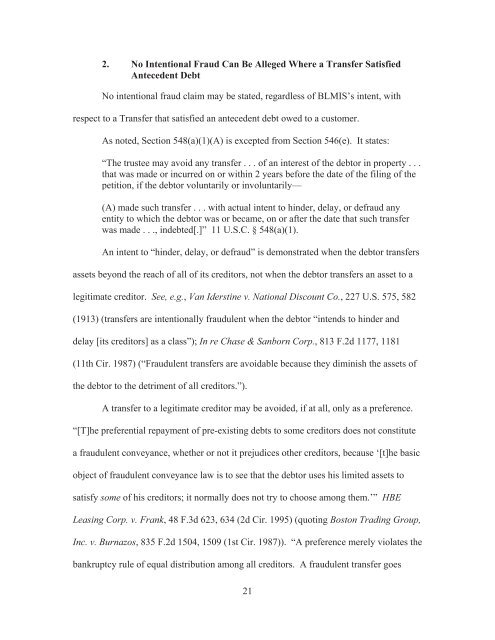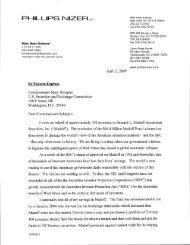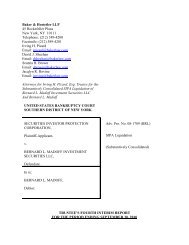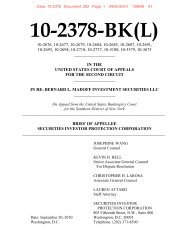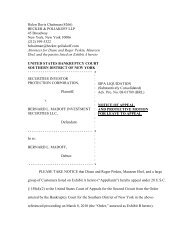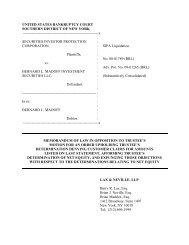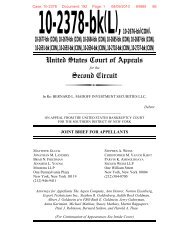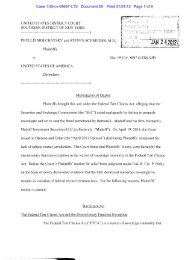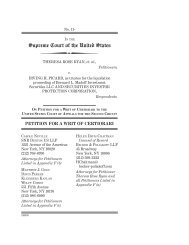Davis Polk & Wardwell LLP 450 Lexington Avenue New York, New ...
Davis Polk & Wardwell LLP 450 Lexington Avenue New York, New ...
Davis Polk & Wardwell LLP 450 Lexington Avenue New York, New ...
You also want an ePaper? Increase the reach of your titles
YUMPU automatically turns print PDFs into web optimized ePapers that Google loves.
2. No Intentional Fraud Can Be Alleged Where a Transfer Satisfied<br />
Antecedent Debt<br />
No intentional fraud claim may be stated, regardless of BLMIS’s intent, with<br />
respect to a Transfer that satisfied an antecedent debt owed to a customer.<br />
As noted, Section 548(a)(1)(A) is excepted from Section 546(e). It states:<br />
“The trustee may avoid any transfer . . . of an interest of the debtor in property . . .<br />
that was made or incurred on or within 2 years before the date of the filing of the<br />
petition, if the debtor voluntarily or involuntarily—<br />
(A) made such transfer . . . with actual intent to hinder, delay, or defraud any<br />
entity to which the debtor was or became, on or after the date that such transfer<br />
was made . . ., indebted[.]” 11 U.S.C. § 548(a)(1).<br />
An intent to “hinder, delay, or defraud” is demonstrated when the debtor transfers<br />
assets beyond the reach of all of its creditors, not when the debtor transfers an asset to a<br />
legitimate creditor. See, e.g., Van Iderstine v. National Discount Co., 227 U.S. 575, 582<br />
(1913) (transfers are intentionally fraudulent when the debtor “intends to hinder and<br />
delay [its creditors] as a class”); In re Chase & Sanborn Corp., 813 F.2d 1177, 1181<br />
(11th Cir. 1987) (“Fraudulent transfers are avoidable because they diminish the assets of<br />
the debtor to the detriment of all creditors.”).<br />
A transfer to a legitimate creditor may be avoided, if at all, only as a preference.<br />
“[T]he preferential repayment of pre-existing debts to some creditors does not constitute<br />
a fraudulent conveyance, whether or not it prejudices other creditors, because ‘[t]he basic<br />
object of fraudulent conveyance law is to see that the debtor uses his limited assets to<br />
satisfy some of his creditors; it normally does not try to choose among them.’” HBE<br />
Leasing Corp. v. Frank, 48 F.3d 623, 634 (2d Cir. 1995) (quoting Boston Trading Group,<br />
Inc. v. Burnazos, 835 F.2d 1504, 1509 (1st Cir. 1987)). “A preference merely violates the<br />
bankruptcy rule of equal distribution among all creditors. A fraudulent transfer goes<br />
21


